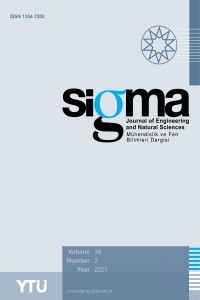The effects of various parameters on the accuracy of kinematic PPP in different platforms
The effects of various parameters on the accuracy of kinematic PPP in different platforms
GNSS, Kinematic PPP Effective Parameters, Relative Point Positioning,
___
- The article references can be accessed from the .pdf file.
- ISSN: 1304-7191
- Başlangıç: 1983
- Yayıncı: Yıldız Teknik Üniversitesi
Nguyen Thuc BOI HUYEN, Nguyen HOC THANG
Production, characterization and antioxidant activity evaluation of quercetin loaded PLGA nanofibers
Kenan ERİN, Mustafa Çağrı KUTLU, Barış BORU
From past to present: Spam detection and identifying opinion leaders in social networks
Ayşe Berna ALTINEL GİRGİN, Gizem GÜMÜŞÇEKİÇCİ
Secure encryption from cyclic codes
Selda ÇALKAVUR, Murat GÜZELTEPE
SSEA for PSN: A novel secure technique of communication through IOT devices
